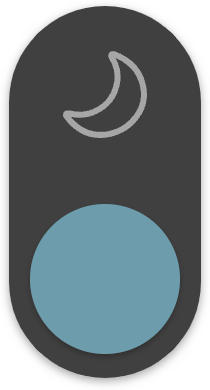
The 33rd Hong Kong International Optical Fair, organized by the Hong Kong Trade Development Council (HKTDC) and co-organized by the Hong Kong Optical Manufacturers Association, concluded successfully. Held under the theme "Bright Eyes · New Horizons," this year's exhibition brought together designers and brands from around the world to showcase a diverse range of eyewear pieces. From fashion trends to professional functionality, the event fully demonstrated the limitless possibilities in eyewear design.
This year's fair gathered the latest products aligned with key market trends—"smart technology," "sustainable development," "senior wellness," and "function & design"—showcasing the industry's latest achievements in technological innovation and sustainability. By incorporating elements such as artificial intelligence and eco-friendly materials, exhibitors launched numerous products that balance functionality and aesthetics, meeting diverse market demands and further enhancing the industry's competitiveness in the global market.
Design and sustainability define new aesthetics of eyewear
In response to the rise of Environmental, Social, and Governance (ESG) concepts, several eyewear brands have successively launched eco-friendly glasses made from recycled materials. Among them, Hong Kong exhibitor Winky International Limited showcased a series of eco-friendly sunglasses and optical frames made from biodegradable materials. Kevin Ching, the company's Founder and Creative Director, stated that the fair specifically featured three major labels, including "green solutions supplier," which attracted many buyers to their booth to learn about the products and the company's commitment to sustainability.
Environmental protection has become a core element of eyewear. As early as 2018, Kevin keenly observed the trend of sustainable fashion and began using biodegradable acetate for eyewear. Since 2023, all the brand's products have been made from sustainable materials, even opting for Italian eco-friendly materials for the nose pads. In 2022, the brand further collaborated with Carl ZEISS on a co-branded collection featuring exclusive logos and accompanying manuals, enhancing the brand's premium quality.
Since the brand's inception in 2011, driven by his passion for eyewear design, Kevin embarked on an entrepreneurial journey from setbacks to flourishing success. Initially, he planned to focus on the Hong Kong and mainland China markets. However, the new brand lacked recognition, and he felt the Hong Kong market had a slight preference for foreign brands. Coupled with his initially minimalist designs, it was difficult to compete with major international brands, leading to numerous obstacles.
"At the time, retail stores either said the designs were ordinary or focused on price competition. We lacked fame and couldn't easily lower prices, so we had to 'go global' first," he recalled. Reluctantly, Kevin turned his attention to the European and American markets. However, this shift unexpectedly opened up new horizons.
With its unique designs, Kevin's BIG HORN brand went on to win international design awards in Italy, the United States, the United Kingdom, and others, attracting attention from celebrities and artists in Europe, America, and Asia.
"Hollywood stars and artists contact us to borrow glasses for magazine covers, music videos, and even bring them to film festivals and fashion weeks," he shared. Interestingly, during a trip to the UK in 2022, local partners mistakenly believed BIG HORN was a British brand, with very few realizing its Hong Kong origins. Today, the brand has "re-entered" the Hong Kong market through a local agent while simultaneously expanding into the mainland China market. Thus, from venturing into Europe and America to returning to Asia, from focusing on design to practicing sustainability, Kevin's brand proves that designs originating from Hong Kong can also shine on the world stage.
3D printing technology: Reshape the tradition and future of eyewear design
In the "Designer Cafe and Innovation Hub," LYNNS MASK By JLX STUDIO MADE, founded by Hong Kong eyewear designer Jeffrey Leung, focused on 3D printed eyewear. Their products blend traditional craftsmanship with digital technology, utilizing eco-friendly 3D printing to reduce production waste, showcasing the future direction of sustainable design and personalized customization. Jeffrey shared that with over twenty years in the eyewear design field and also working as an industrial design teacher, he uses 3D printing technology as his brush to paint a new picture on the canvas of the traditional eyewear industry.
"In the past, glasses were mostly made from conventional materials like acetate and metal. Styles on the market were often similar, and it was difficult to achieve breakthroughs in design," Jeffrey admitted. Traditional eyewear production relies on molds, requiring mass production of hundreds of units per style after mold creation, which not only limits design flexibility but also creates inventory pressure and environmental burden.
The emergence of 3D printing technology provided a solution to these pain points. His product line includes both fully 3D printed frames and styles that combine 3D printed components with traditional acetate or metal. "For example, pairing metal temples with a 3D printed frame, adding 3D printed patterns, hollow designs, or even customized logos onto acetate frames – all can be easily achieved," Jeffrey explained.
Sustainability and customization are the core reasons Jeffrey insists on using 3D printing technology. The 3D printing materials he selects are inherently eco-friendly, and the mold-less production process reduces pollution and lowers inventory needs. More importantly, this technology allows for flexible design adjustments based on customer preferences, from surface textures to the overall style. "This exhibition attracted many overseas clients and even traditional eyewear manufacturers seeking collaboration. They have brand positioning and styles, but lack 3D printing technology. Our mature technology can quickly help them upgrade their products," he noted.
Jeffrey also saidt that for traditional manufacturers to venture into 3D printing, they would need to repurchase equipment and build a 3D design team, which involves high costs and difficulty. Therefore, collaboration can achieve a "1+1>2" effect: manufacturers provide the brand foundation, while he injects the 3D printing technology, brainstorming together to create designs that better fit the market.
Speaking about the future, he is confident: "I believe more international brands will pay attention to 3D printing materials and incorporate them into their own designs." In his view, 3D printing is not just a technique; it is a bridge connecting the "traditional form" of eyewear with its "future possibilities," precisely the direction his brand and the entire eyewear industry are moving towards.
(Source: Wen Wei Po; Journalist: Yuwen; English Editor: Darius)
Related News:
Deepline | HK's hydrogen highway: Connecting to a cleaner GBA
Deepline | HK's aging crisis: Soaring public healthcare costs spark urgent reform




















Comment